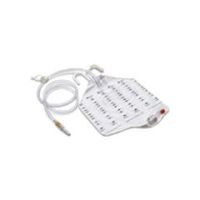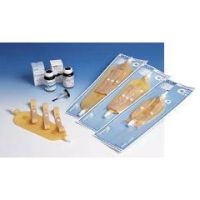
FREQUENTLY ASKED QUESTIONS
How do I wear a urine leg bag?
Since good urinary drainage relies on gravity, your urinary leg bag must remain below your bladder. Use an alcohol pad to clean the opening of the catheter tubing before attaching it to your leg bag. To ensure proper flow, make sure there are no crimps in the catheter tube before taping it to your leg. Leg bags can be positioned on either your thigh or calf. After selecting the proper location, secure your urinary leg bag with the accompanying straps. The straps should provide a secure hold without causing discomfort or potentially cutting off circulation. Most likely, you will need an extension tube for increased comfort and proper positioning of the leg bag.
How do I empty a catheter bag?
A catheter bag, or urinary drainage bag, is easiest to empty when it is half full. Prior to handling the catheter tubing, bag or any other accessory, wash your hands thoroughly. In preparation to empty the contents, set a large container on the floor or on any hard surface and carefully position the catheter bag over the container. Most catheter bags are designed with a retractable drain spout, a clamp, or a cap to make the process easier. Regardless of the release device, avoid touching the tip of the spout as the urine pours into the container or toilet. When the bag is completely empty, clean the opening with an alcohol swab, close the bag, and wash your hands again. Proper hygiene and maintenance will decrease the chance of infection and extend the life of your catheter supplies.
How often should a urinary drainage bag be changed?
To protect yourself from possible infection, you should replace any urine bags that show discoloration, damage or wear and tear. Some urinary drainage bags may turn purple, but this change is not a cause for concern. Under normal circumstances, you should change your urine collection bag monthly, or whenever the manufacturer recommends. When changing your urinary bag, remember to change the entire catheter system. This routine will drastically cut down the risk of infection and malfunction.
How do I clean a bedside urinal?
Most people choose plastic bedside urinals because these containers are inexpensive, light-weight and easy to clean. Some are even environmentally friendly. When cleaning a bedside urinal, the objective is to get rid of urine, residue, unpleasant odor, and bacteria. The first step is to completely empty the container and flush it with hot water. To break down deposits, squirt dish soap into the urinal. Add one cup of white vinegar and 1⁄2 cup of baking soda to disinfect and deodorize. Fill the rest of the container with hot water, replace the cap, and shake gently. Allow the solution to activate for 20 minutes before pouring it out into the toilet. Finally, wipe off the lid and cap of the bedside urinal with white vinegar.
How do I use disposable urine bags?
A disposable urinal or urine bag provides a good solution for avoiding the hassles of cleaning your bag, eliminating urine odor, and preventing infections. This bag allows you to discreetly urinate into an inner pouch containing a liquid-absorbing, spill-proof, and odor-eating gel. You can reuse a disposable urine bag until it is full before throwing it away. The standard bags have a unisex design, but options made with women and children in mind are readily available as well.
MEDICAL ADVICE DISCLAIMER
The information, including but not limited to text, graphics, images, charts, and any other material on this site, is intended for informational purposes only and does not take the place of medical guidance provided by your physician. No information on this site is intended to be a substitute for professional medical advice, diagnosis, or treatment. Please consult a qualified medical professional about your condition or circumstances before undertaking a new healthcare regimen.
















